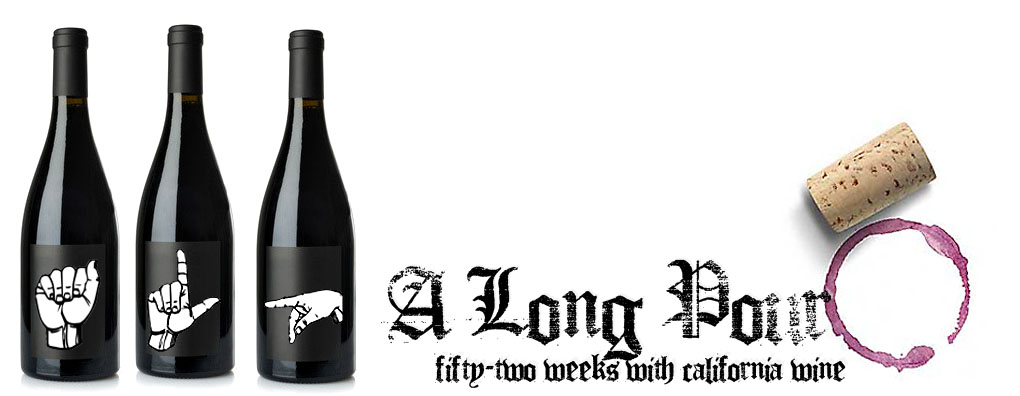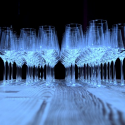On My High Horse – Analysing the Conversations
I suppose that when I penned my somewhat tongue and cheek “An Open Letter to Those Who Write Open Letters to Millennials,” I wrote out of some frustration. Increasingly, it seems we are called upon to choose a side and then defend it. There are the obvious topics like politics, but the trivial ones too: Mac vs. PC, Cannon vs. Nikon, Country Music vs. Real Taste, etc.
We live in a divisive culture.
{Read the Original Articles:}
An Open Letter to Those Who Write Open Letter to Millennials
Millennials – Things They Actually Say: Illka Siren & Kara Jones
Millennials – Things They Actually Say II: Jennifer Thomson
Millennials – Things They Actually Say III: Brandi Stansbury & Matt Six
Millennials – Things They Actually Say IV: Elliot Karpman
Sadly, that goes for wine too. Oak vs. Unoaked, 13% vs.15%, Corporate vs. Artisan, and Millennials vs. Baby Boomers. While it is normal, even beneficial to have opposing viewpoints from others, I do not understand a mentality that says we must each choose a side and then defend it to the death. It’s shortsighted reasoning.
To the low alcohol producers that say anything over 14 or 14.5% is “undrinkable,” I don’t believe you. To the producers who refuse to turn out anything other than 15.5% monsters, a lot of your wines are terrible beasts! The truth, many push alcohol higher than they say in print. Many of the “fruit bomb” producers enjoy lower alcohol wines with their meals at home. In reality, people show more balance in their tastes than they let on. So who is right? No one. Good wine is good wine and there is room for us all.
Music needed Mozart as much as Zeplin, Sinatra as much as Waits.
Art needed Caravaggio as much as Warhol, Sargent as much as Pollack.
Wine needs France as much as California, Grahm as much as Krankl.
Contrast keeps us interesting. Being challenged in our thinking is how we change, how we get better. Or as winemaker Timothy Milos of Hidden Ridge said to me, “uniformity is the death of wine,” thus contrast gives us life.
So when I read these false pretexts about young wine consumers, that we are all one way or another, I boil a little bit. According to one comment on Steve Heimoff’s site the other day (An Open Letter to Certain Wine Critics), once Baby Boomers fall-out of the scene, no one will drink big wines anymore. Based on what? My friend Jordan said the other day, “you know, lately, I have just been craving big wines.” Jordan is 25. The funny thing is, so have I. When I pour wines for groups of friends who are not particularly wine savvy, the big wines are just as likely to be the favorite as the more subdued ones. Good wine is good wine. Why can it not be that simple?
I don’t know where all this chatter is going, other than in circles for some people. There will always be people who claim to have a pulse on what’s really going on, but the reality of wine is a reality of constant change. The rage of today is the bargain sell-off of tomorrow.
There are however, a few long-term trends I will rather confidently predict.
1. The decline of the Wine Critic as we now know them:
Not one of our six participants (ages 24-34, three girls, three boys) said they give critic’s scores anything more than passing attention. They are a reference at best, but never the main driving force. So what was their driving force?
In short, brands of genuine interest. Almost all six said they were looking for connection on a personal level, be that design, the people, or the nature of the project (sustainable, varietals, regions, etc.).
While the current group of Wine Critics will continue to be supported, I do not see a fresh crop taking over and having the same influence they once had. I am not anti-critic, but the model is changing as open media allows each consumer to learn much more on his or her own, so that they don’t need to rely on a guiding voice the way they once did.
Wine bloggers will continue to fill in some of the gaps, but their individual impact will not be what critics like James Laube or Robert Parker have enjoyed.
This isn’t just a matter of wine consumers getting a little older before they “get into” scores. The group we worked with consume more wine and are more wine knowledgeable than nearly any of the 30, 40, and 50 year old wine consumers I know. If they are not into wine scores yet, they probably won’t ever be.
2. The rise of small local brands:
Wine is going the way of beer, with more people interested in craft products. To be clear, just as in beer, there will always be large bargain driven brands that sell well. Not everyone will be a beer geek and it’s the same with wine. However those who are, will increasingly seek out brands that they can have a personal connection with. This effect will be amplified in markets that are close to wine regions, but we can expect it to spread as more urban wineries pop-up all over the Country.
3. The rise of obscure grapes and the decline of the major varietals:
Sears, Montgomery Ward, JCPenney. These were once giants of American consumerism. Mondavi, Gallo, Kendall Jackson, Cabernet, Chardonnay, Zinfandel, so were these. I am not predicting that the big grapes will shrivel into raisins, they won’t. As long as the wine is good, people will want it. But we should expect to see increased sales of obscure varietals, as a more adventurous and less biased consumer base enter the market. I already see a lot of this in Santa Barbara, where producers are starting to take varietals like Cinsault and Counoise out of their blends and are showcasing them on their own.
Modern day Americans are eating far more globally then did past generations (Thai, Mexican, Indian, etc.), and we see this with wine as well.
Final Thoughts
I don’t think anyone confidently knows where the wine industry is going in the long run…and that is exciting! The chatter will continue, as will the annoyingly bad marketing ploys. There will always be brilliant producers quietly working their craft as if it was the only thing in the world that matters and there will always be those who are ready to capitalize on trends and perceived differences.
In regards to the perceived differences of Millennials vs. Baby Boomers, I do think there are some fundamental gaps in the way these two groups think about wine, but lets not elevate one over the other. “But Millennials are changing the wine world,” you’ll say. True…in part. Consider this though:
There was a time, not that long ago, that Richard Sanford, Dick Graff, Randall Grahm, John Alban, Adam Tolmach, Jim Clendenen, Bob Linquist, Paul Draper, and many others were twenty-somethings. They weren’t running blogs, they were running tractors, they weren’t tweeting. They were planting vineyards and they weren’t typing furiously in judgment, they were working hard with their hands.
That generation, the one some of us are so quick to dismiss, are the reason we are where we are today and the generation before them is the reason they are where they are. Let us always remember that the spirit of wine lives in both exploration and tradition, in pioneers and protectors of heritage.
We remain in this together.


